Frequently Asked Question
How do I set up an ssh tunnel to print outside of the CS network?
Last Updated 6 years ago
Windows Instructions
If you have a Windows computer, you can use Putty, a free tool, to connect to the physics ssh server. Once you have Putty running, on the left-hand side, expand SSH and select Tunnels. In the Source port field, you can enter mostly any ports above 5000. We recommend using 9100 since it is the default HP Jetdirect port. For the Destination field, enter printername.physics.gatech.edu:9100, replacing printername with the correct printername. The port number after the printername: must always be 9100. The printer name will be labeled on the printer itself. Click Add when you have everything entered.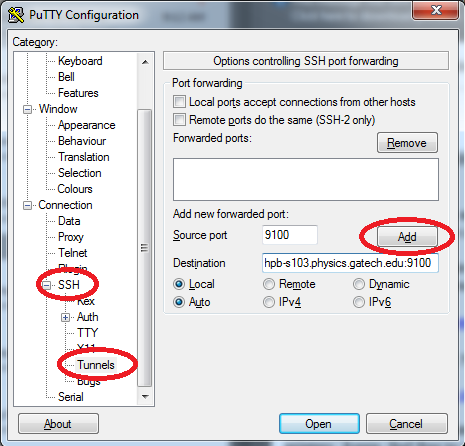
Next, scroll to the top of the left hand side and click Session. Enter ssh.physics.gatech.edu in the Host Name field and save the session for future use. Click Open to connect.
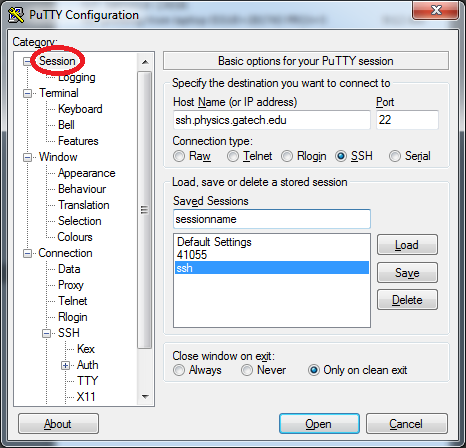
Enter your GT username and password when prompted. If asked to accept a certificate, enter yes.
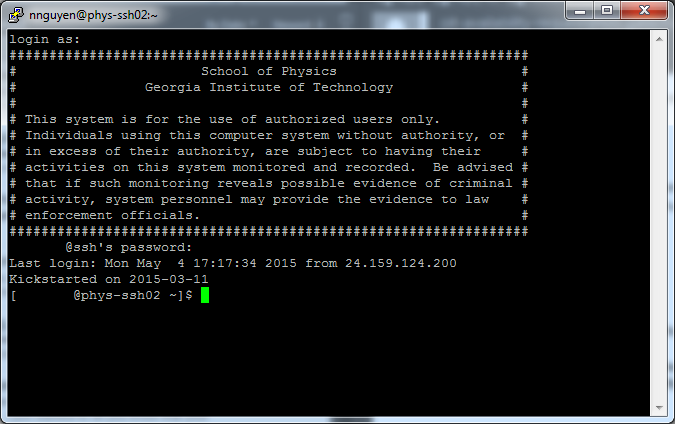
Install the printer by going to Start > Devices and Printers > Add Printer. Select Add a local printer.
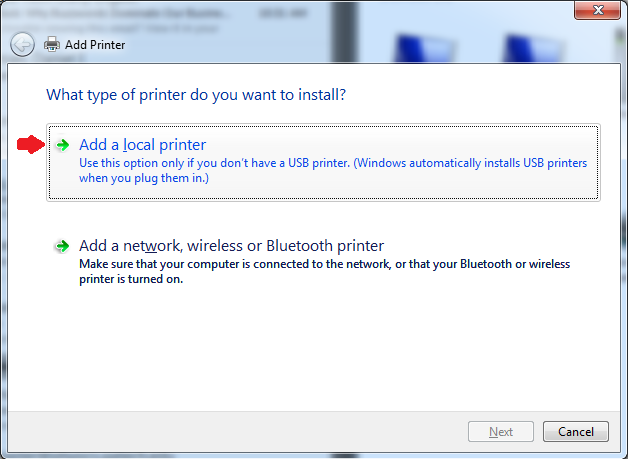
Select Create a new port and choose Standard TCP/IP Port. Click Next.
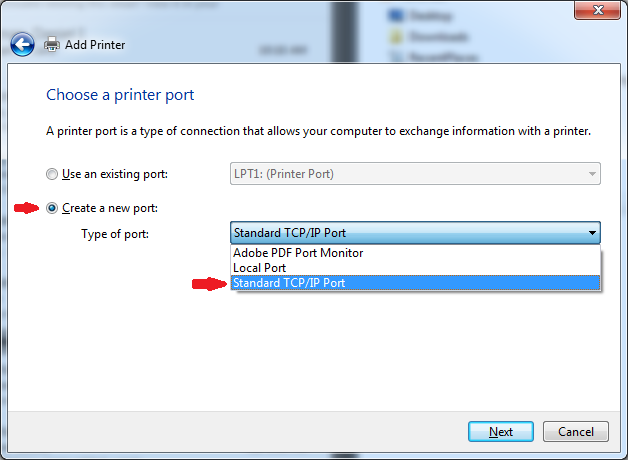
For Hostname, enter localhost. For Port name, enter any name that associates it with that printer. We recommend using the printer name. Click Next.
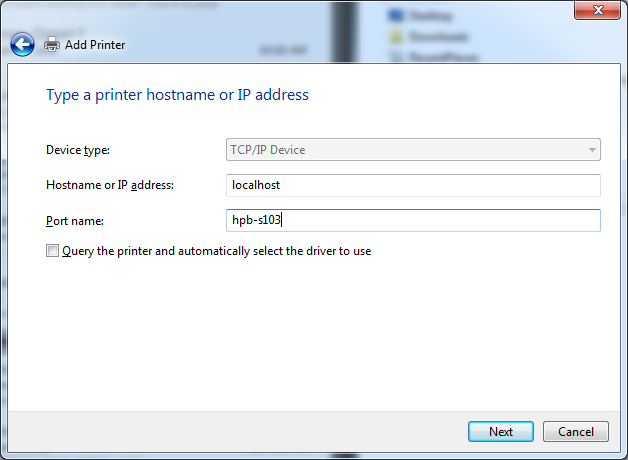
Select the manufacturer and the model of your printer. If it is not listed, click Windows Update to update the list. It will take a few minutes to update. Click Next when you've selected the correct model to complete the printer installation.
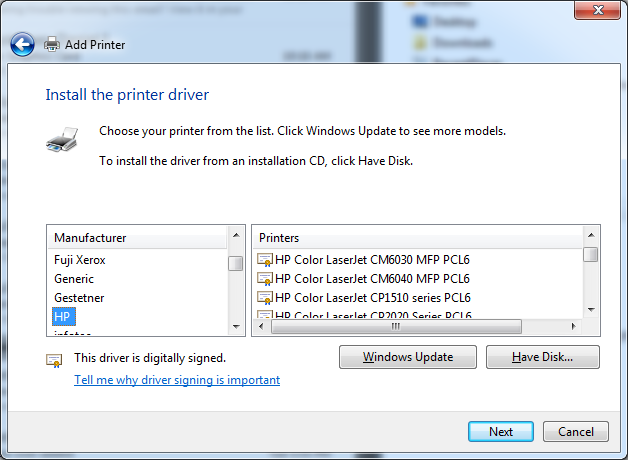
You can now print to that printer as long as you have the Putty session running.
Linux
To connect to the physics ssh server and forward your printing port, use the following command in a terminal. Replace username and printername with the correct values. Use your GT username and password. The printer name is labeled on the printer.ssh username@ssh.physics.gatech.edu -L9100:printername.physics.gatech.edu:9100
Go to your printer system settings and add a new Network HP Jetdirect printer. Use localhost as the Hostname and enter the Port number you used in your command (the number after -L).
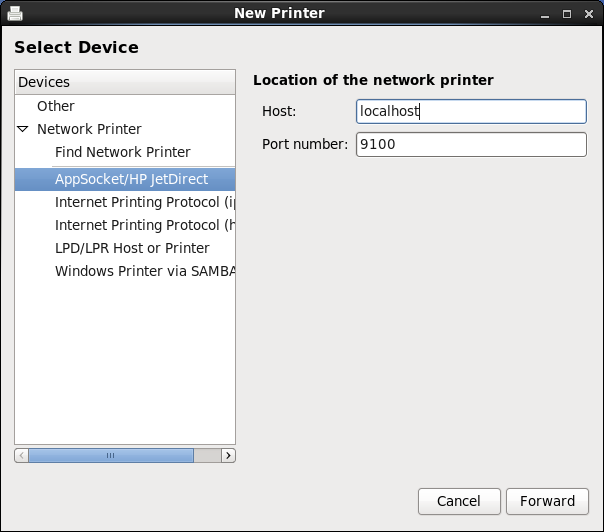
Select the manufacturer and model of your printer. Continue through the prompts to complete the installation.
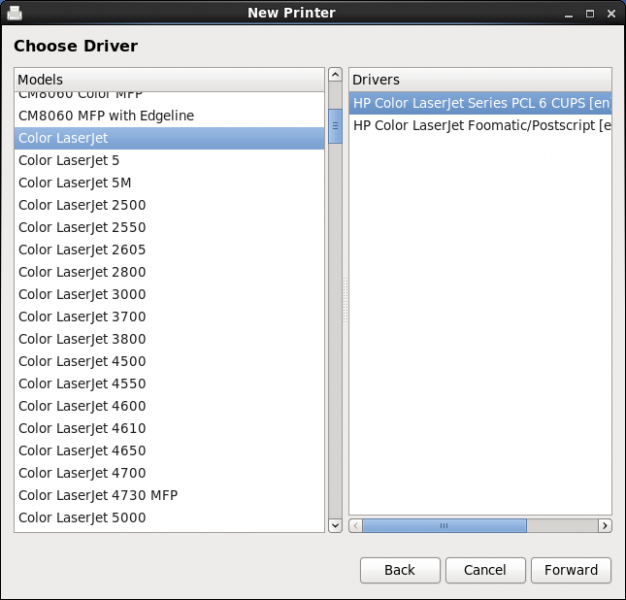
As long as your ssh session is running, you will be able to print to that printer.
Mac
To connect to the physics ssh server and forward your printing port, use the following command in a terminal. Replace username and printername with the correct values. Use your GT username and password.The printer name is labeled on the printer.ssh username@ssh.physics.gatech.edu -L9100:printername.physics.gatech.edu:9100
Go to System Settings > Devices and Printers. Add a new Network HP Jetdirect printer.
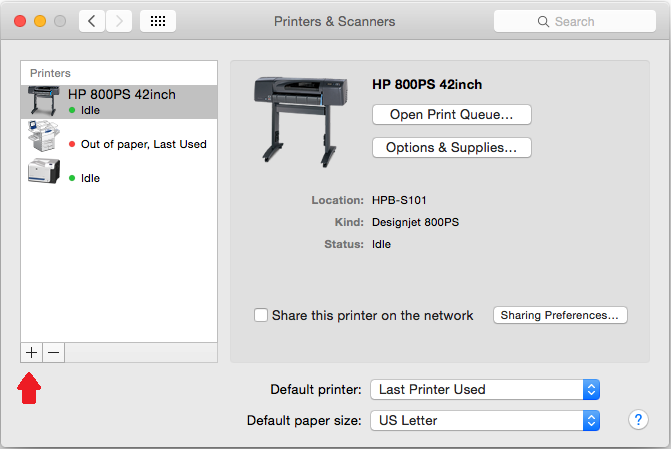
Select IP at the top. Use localhost:9100 for the Address. Make sure the port number matches the local port in your command (-L9100:printername.physics.gatech.edu:9100). Use HP Jetdirect for the Protocol. Select an appropriate name for the printer and click Add. Continue through the prompts to install.
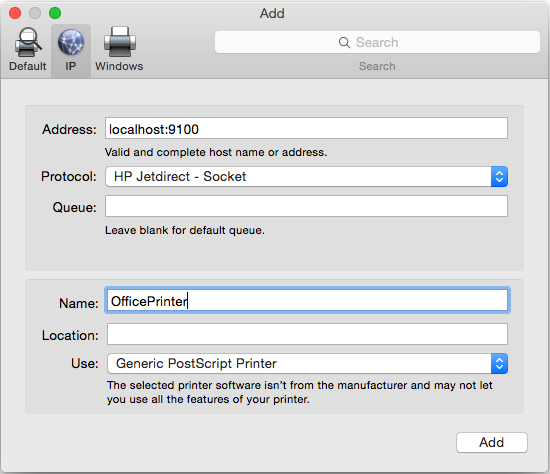
As long as your ssh session is running, you will be able to print to that printer.
Connecting to multiple printers
When installing addition printers, you must use a different local port number for each one. In Linux and Mac, this will change your ssh command tossh username@physics.gatech.edu -L 9101:newprintername.physics.gatech.edu:9100
The underlined number has to be different for each printer. When installing the printer, you can specify what local port number to use.
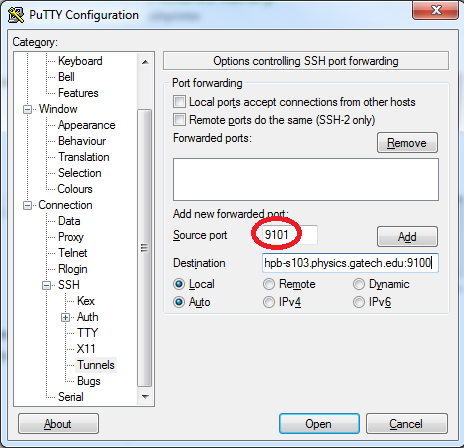
For Windows computers, first change the source port in your Putty settings.
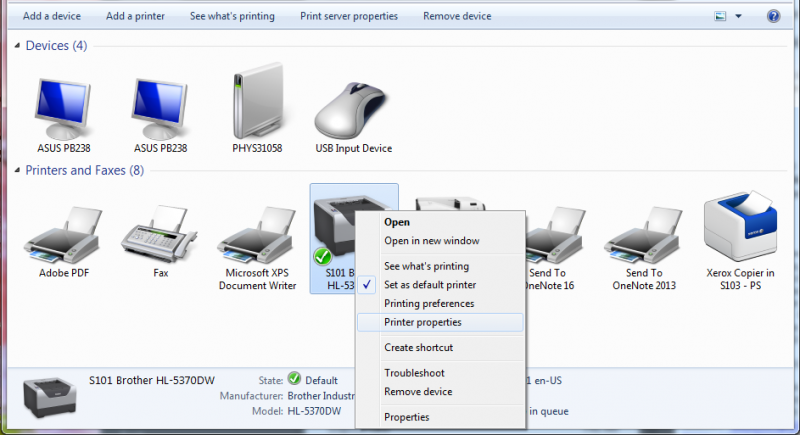
Install the printer as described earlier in this page. After the printer is installed, go to Start > Devices and Printers. Right-click on your new printer and click Printer properties.
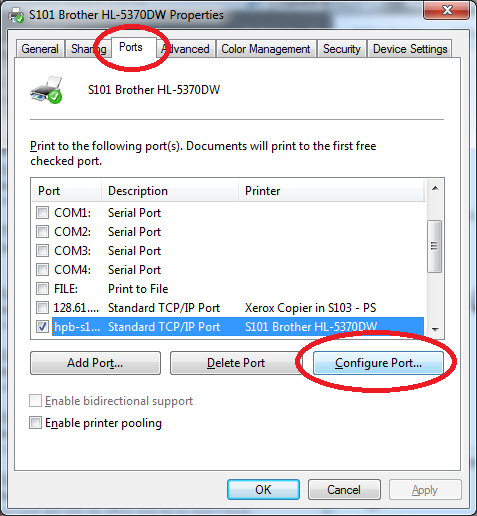
On the window that comes up, click the Ports tab on the top and then click Configure Port.
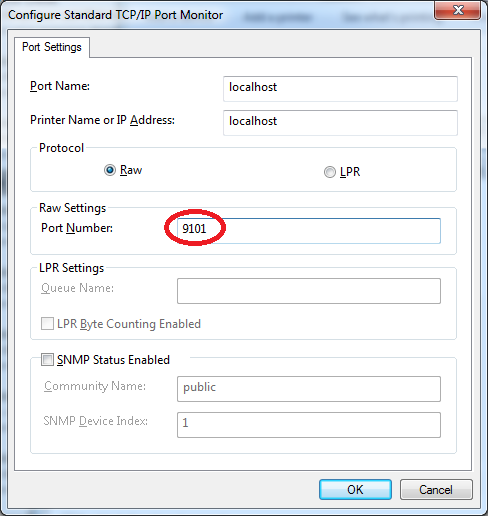
Change the Port Number to match what you have as your Source Port in your Putty settings. Click OK to save.
You should now be able to connect to multiple printers using different Putty sessions.